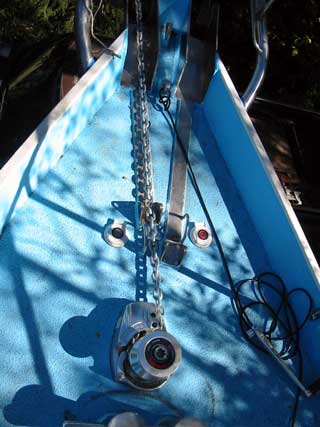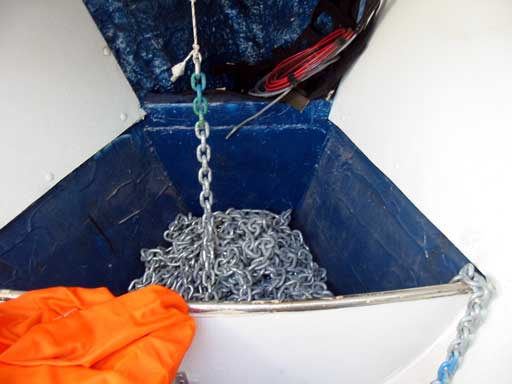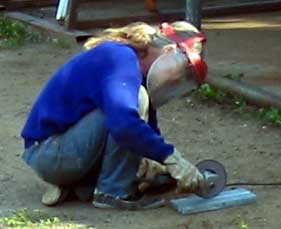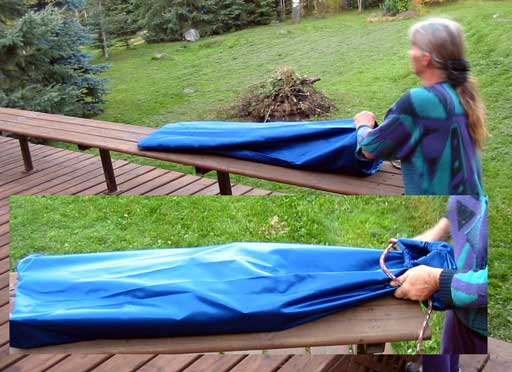| Day 422 |
 |
Chain and anodes |
| The anchor chain was my project for today. I was ordered to get it up into the boat before snow starts. Things are pretty green now but you never know in this region. | |
| I have read about people using colored zip
ties, tape, and ribbons to mark chain led out. We may use one of these
methods if this acrylic paint idea doesn't work.
There is 325 feet of chain here, 175 feet
as a secondary, and it's marked out as follows:
I had to resist the temptation to use resistor colors! But then I realized that I would end up with browns and blacks and greens which may be hard to see once the rust starts. I think the acrylic will hold up well on the galvanized finish because it holds on to clothing through many wash cycles. Probably flawed logic there but hey it's worth a try! |
 |
|
I almost goofed and rolled the low number end in first. I then paused the windlass and painted the "boat end" of the chain a light blue, and the anchor end green. There! |
|

 |
|
| The winch worked flawlessly, and added up to only 1 amp hour. That's not really a test as hauling up an anchor slows things down. Plus we'll never be anchored in 6 feet of water ( I hope!! ) 375' of chain sure looks small in there doesn't it? I does weigh about 400 lbs though. The coal tar on SS plate covered with 3 layers of blue stuff has deadened the chain's rattling sound well. | |
 Gena
cutting zinc. It's not soft like lead! |
Gena made up the anodes. ( Our
boat takes 4 on the keel) The flatbar was drilled and the zinc was cut
down to 10 lb ingots. Then SS bolts were tapped into the zinc and the whole
thing siliconed then bolted from behind.
If you recall before we painted her, the big bolts were welded on to the keel. We don't know how this will work, but it should hold up at least until the zinc has corroded down to the bolt's last few threads. At least it'll be easy to replace. We have an extra couple just in case.
The rudder also has a "dome" style anode on each side (see day 423) and the prop shaft has a collar style anode bolted on. There's no way off predicting how fast anodes will wear down as all boats are different. It depends on how much metal there is exposed under the waterline, and what types of metals there are. I do know that if the anodes are lasting an incredibly long time, it may be a good idea to start checking "other" things out lol! |
 |
|
| Gena found time to
sew a bag for the Fortress anchor when it's all apart. The material is the
same as I used to make the jib on our little boat with. It's super strong,
shiny looking, water proof, and holds up well in UV. I have no idea what it
is. Gena has also made a couple of sail bags out of it already. Bravo Gena! |
|
| The rest of my dat was spent continuing on Gena's desk. Most roll tops, no matter what shape they are have these little cabinets above the roll part to hide where it goes in. |
 |
| So...monkey see monkey do. These will be a little different in that they will flip down to horizontal. The depth of the cabinets would be great for large books like atlases or road maps. I have Just thrown it together for the photo. Everything must be coated first. Twice at least. Notice the round door is on as well. The fit is pretty good! Now I must try to figure out what kind of latch to use on it. Hmmm. |
 |

Day 422:
9 hours: Marked and pulled in anchor chain, Cut and put on anodes, continued on
desk